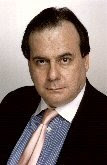In response to the November 3rd Kingston Freeman article stating that Maurice Hinchey has proposed a bill to turn the Hudson Valley into a federal park, I have (a) contacted Congressman Hinchey's office for a copy of the bill and (b) inquired with the National Parks Service as to the legal implications of designating the Hudson Valley a national park.
In the Adirondack Park, a state park, construction of new septic tanks has been largely stopped and much residential construction is limited or illegal. New jobs rarely enter the Adirondack Park. If a citizen of Long Lake, Blue Mountain Lake or Speculator wants to start a business of any stature, they will have to move elsewhere. In the Town of Olive, New York City and State own about 70 percent of the land, so development is largely impossible. The city reservoir is located in Olive.
In the future, stricter regulations concerning wood burning, hunting and home sales are likely to ensue from various federal laws, specifically including the "cap and trade" proposal currently before Congress. Thus, law directly governing many ordinary citizens, specifically including those adhering to "alternative" lifestyles, farming, communal living and the like can easily become directly affected.
The following is an exchange I had with a representative of the US Park Service who says it is unknowable how much flexibility the Park Service will have in implementing regulation--or how responsive they will have to be to various external pressure groups. For example, Congressman Hinchey is a direct recipient of campaign contributions from numerous political action committees (PACs) in the agribusiness field. Might there be a tie-in between Hinchey's agribusiness interests and his focus on instituting park regulations?
Langbert: I live in the Catskills about 25 miles from Kingston, NY. In the November 3 issue of the Kingston Freeman, a local newspaper, there was an article that stated that Congressman Maurice Hinchey has proposed a bill to turn the Hudson Valley into a national park. I have a number of questions for you as the article was not descriptive the effects of this policy.
a. What regulations normally accompany the establishment of a federal park in a developed region? Here in New York we have the Catskill Park, in which I happen to live, and the Adirondack Park. There are regulations that apply in the Catskill and Adirondack Parks that do not apply elsewhere.
b. Do you have a model or a developed set of regulations for another park region that would be similar to the regulations that would be put into effect should the Hinchey bill pass?
c. What would be the effect of establishing a park on economic freedom in the following areas:
--building houses
--building septic tanks
--sale of real estate
--liens on property not deemed environmentally acceptable?
d. Would there be an effect on construction such as limitations on the amount of real estate development, and/or restrictions on how sewage systems are designed, and/or limits on size, drainage and other environmental effects of real estate construction?
e. Would there be effects on hunting, the introduction of wildlife, the use of firearms and/or on fishing.
Park Service: DEAR MR. LANGBERT: Thank you for your thoughtful inquiry regarding the proposed study of the suitability and feasibility of creating some form of national park system unit in the Hudson River Valley. I note that Congressman Hinchey's bill would require the NPS to examine approaches that would (1) encompass large areas of non-Federal lands within their designated boundaries, (2) foster public and private collaborative arrangements for achieving National Park Service objectives, and (3) protect and respect the rights of private land owners. I have referred your inquiry to others who have been working more closely on this particular issue, and they will respond as soon as possible to your specific questions.
Langbert: Are parks normally governed through regulation rather than law? In other words, what would you say is the ratio of regulation to law? I used to work with pension plans and the regulation/law ratio might have been 40-60 or something like that. What would you say it is in parks governance? Thanks, Mitchell.
Park Service: MR. LANGBERT: As of right now, there are 392 units in the National Park System. They range in size from less than an acre to several millions of acres. Each one has its own mission or purpose for existing, usually as defined by Congress. The parks are governed by a combination of laws, regulations, and policies that work in tandem, and I do not generally think
of them as applying in any particular ratio. The laws, regulations, and policies that would apply to a particular park will also vary, depending on the resources and values that characterize the park, and depending on any particular instructions that the law that established a park has imparted to us. I would invite you to visit the Office of Policy website at www.nps.gov/policy and browse through the wide range of laws, regulations, and policies that come into play. In particular, you might want to look at the Introduction and chapter 1 of NPS Management Policies 2006 (http://www.nps.gov/policy/mp/policies.html), which provide a pretty good context for understanding how we manage the National Park System
Langbert: Thank you very much for the information. I really appreciate it. If you hear anything else from your contacts please let me know. Thanks again.
Tuesday, November 24, 2009
US Park Service: Legal Ramifications of Hudson Valley Park Unknowable
Subscribe to:
Post Comments (Atom)


No comments:
Post a Comment